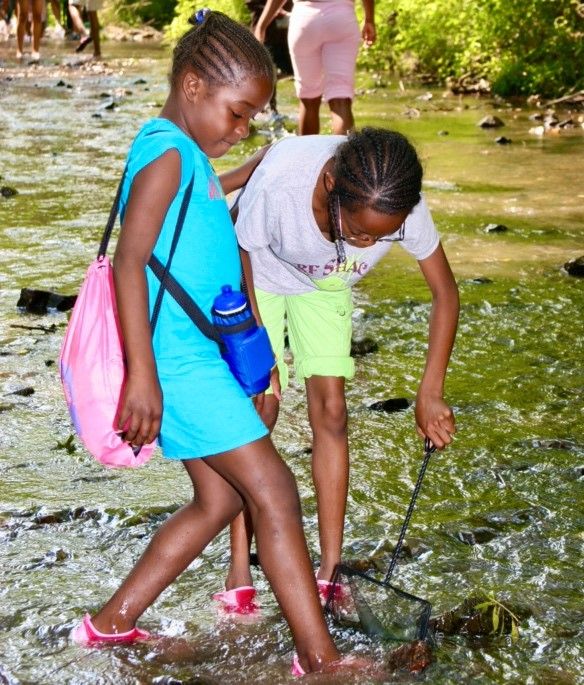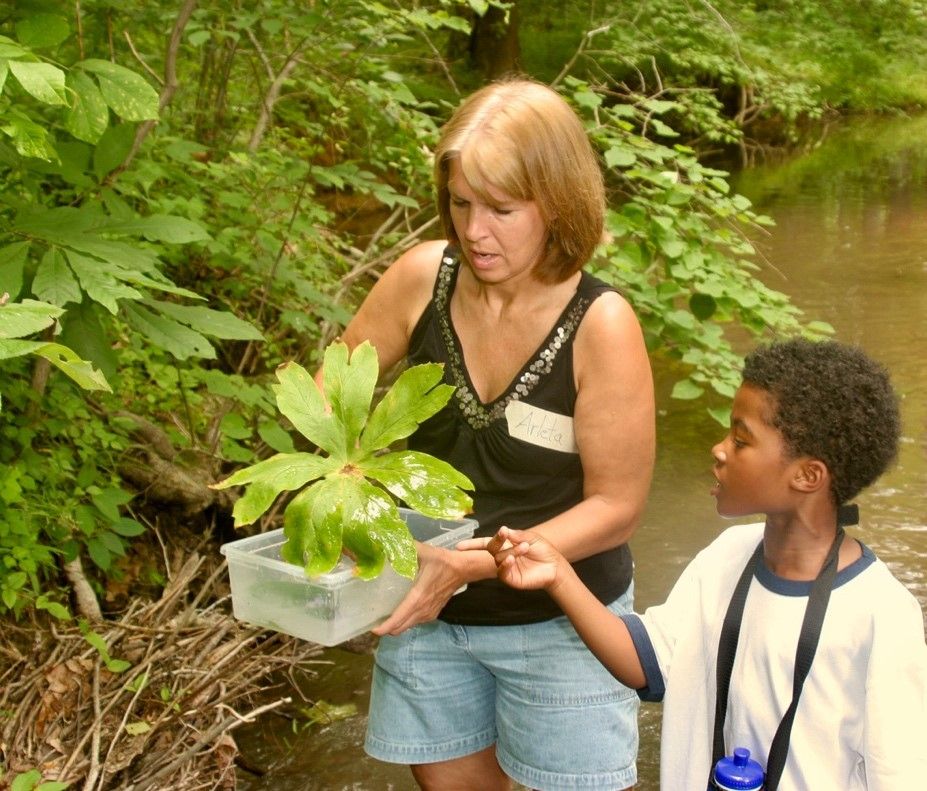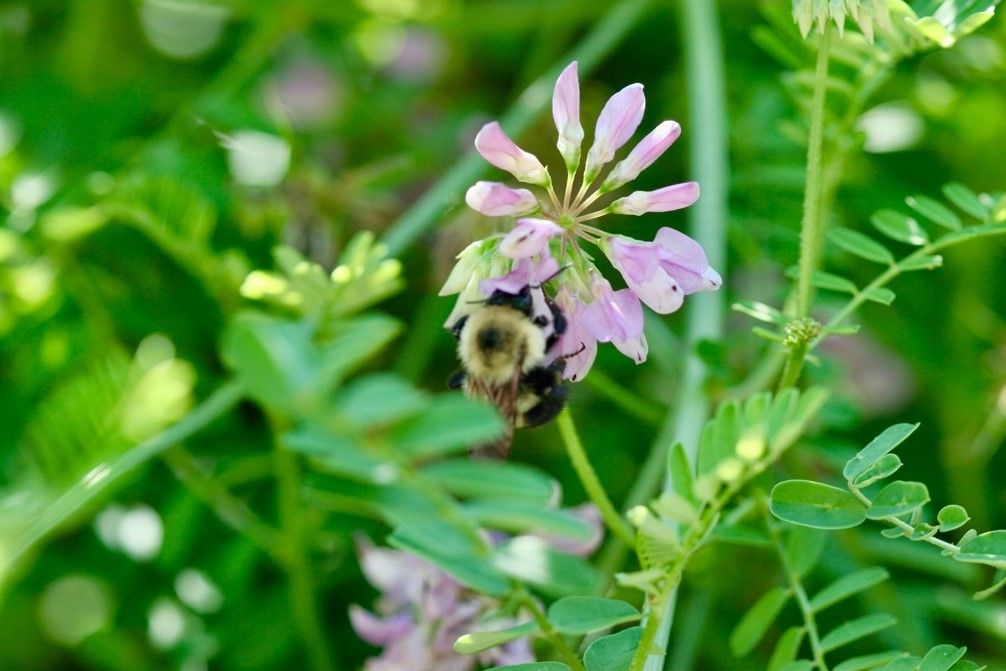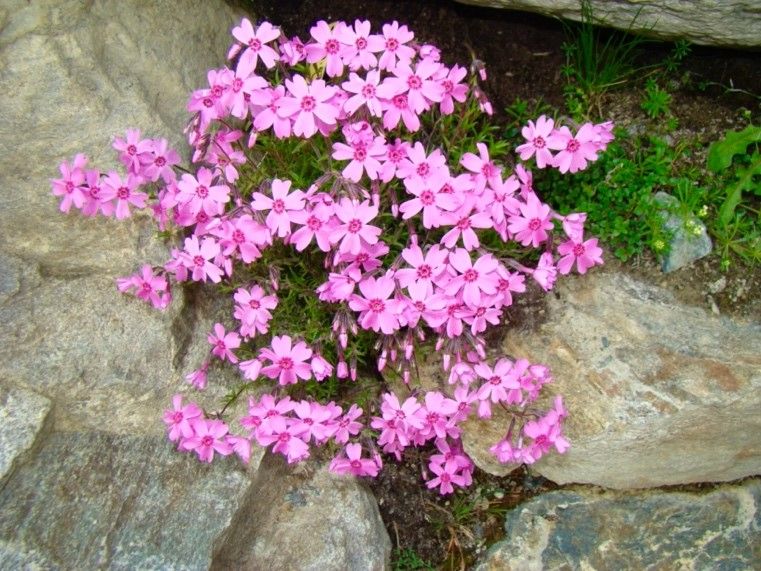Helping Others Connect to Environmental Education

Thoughts on What We Must Do to Help Others Connect to Environmental Education
By Joe Baust

Photo by Deborah Spillman Bard Lake Brandon Spring Land Between the Lakes
Like the lyric: “Hello darkness my old friend, I’ve come to talk to you again.” (Simon and Garfunkle, "Sound of Silence")
If we listen, hear, see and observe, we relate to the world in a different way. When we take the time to be a receptive person, when we feel we are part of a greater world, when we know we are an integral piece of the circle of life, then and only then can we have a sense of how we fit and how we must work to do our part in the “circle of life.” Whenever we think we exist alone, we miss the essence of the beauty of the community of living things. We are all connected and interconnected no matter how hard we try to dismiss that idea. If we embrace that whatever we do impacts other living things, then we will live our life in a different way.
On an evening when we had people sit alone in the dark for 20 minutes, it was amazing how some entered with great fear and at the conclusion of that time were so peaceful. Some people chose to believe that fear was the only outcome. They felt darkness was a learned behavior, it was a time for worry and apprehension.
One group I placed in what we called “A Solo” and some were within 35 feet of where I sat quietly. Some asked what they should do. “Should I close my eyes? Eventually, they settled down. Oft times we would not process their experience. Periodically people volunteered to tell me what they experienced. At the conclusion of the solo time, several persons said to me, “I heard deer coming close to me. I thought this was amazing they would not be frightened.”
They shared, “I was startled, but then it grew in our minds we were sharing the space and the time together.”
If we believe that what we hold close to us is what we see, we have missed how nature or anything we love connects to us. What we see without heart is soon forgotten, because we remember and act upon things that we hold in our mind, our heart, and our eyes.
A colleague used to say to graduate students, “Why are you taking pictures with your camera? Take pictures with your eyes and hold them close with your heart.”
If you tell me what I should see, then you tell me what I should value and how I should value what I see.
But if you let me explore, explore with me. I might just see or feel something you may have not seen or felt. We both can learn together.
I see small, yellow flowers. What do you see?
Let us go into the natural world together, as partners but not as one who knows and one who does not.
Let me discover nature and when I need your help or reassurance, let me feel like I am welcome.
It does not give you permission to tell me, it does give you permission to make me feel a sense of comfort in exploring and being with nature.

Photo: Joe Baust, Silvretta-Bielerhöhe
Once I had an adult group studying in a hardwood forest in the US Forest Service’s Land Between the Lakes. We were about to take a hike along a trail, and I recited the following:
Come on and take a walk with me through this green and growing land.
Walk through the meadows and the mountains and the sand.
Walk through the valleys and the rivers and the plains.
Walk through the sun and walk through the rain.Here is a land full of power and glory.
Beauty that words cannot recall.
Oh, her power should rest on the strength of her freedom.
Glory shall rest on us all. (On us all)
(Phil Ochs, "Power and Glory")Some people knew that lyric, some did not. Those amazing lyrics called their attention we were about to take a walk in which they were to discover what “they saw.” They were excited and ready to explore.
Start with an attention-getter for your students, then get out of their way. Ask them to share what they have found…and then acknowledge their findings.
Let us feel free to walk at our own pace and to see and hear and feel the natural world.
I had invited several undergrads to help me with a stream stroll for a first-grade class.
One brave undergrad asked, “What am I going to do for them?”
I responded, “Be their partner; be with them…help them.”
“Are you sure?” he said. Later he related, “I had a hard time keeping up with them…they were so excited!”
Sometimes our fears about taking children outdoors, on a stream stroll…are based on what we think we need to tell them plus our fears.
Breathe! Let them explore, be their partner. Get out of their way!

Photo: Deborah Spillman, Panther Creek, Land Between the Lakes

Photo: Deborah Spillman, Land Between the Lakes

Photo: Harry/Deborah Spillman, Tobias Wein Gut, Berneck, Switzerland

Photo: Joe Baust, Biospherenpark, Sonntag, Western Austria

Photo: Deborah Spillman, Panther Creek, Land Between the Lakes
I have found those children and adults who do not fit in a classroom setting, in rows and aisles or lecture or what have you, when introduced to nature or the out-of-doors, they seem in their element. Those students who seemed to do well in the classroom observe those who are exploring nature, who had a difficult time in the classroom, and are perplexed. How is it they seem to be having a good time and are so engrossed in what is going on around them? (This is something Gerry Lieberman has discovered in his research, “Closing the Achievement Gap: Using the Environment as an Integrating Context for Learning. Results of a Nationwide Study.”)
I also asked undergraduate students what they liked most about elementary school. We collected this data each time we did this with 125 university juniors and seniors that were close to student teaching. More than 93 percent of these persons mentioned they loved doing things outdoors, whether it was physical education or recess.
It reinforces what Fred Rogers shares about children (I paraphrase here): “Children’s work is play.” We often believe what children learn through play is of no value. But, upon careful inspection, we find children and adults alike learn so much through play. Why is it that we believe it is frivolous and without value?
Be ready to be positively amazed when you give students the opportunity to go outside and explore.
"Time keeps on slippin, slippin, slippin into the future."
(Steve Miller Band, "Fly Like an Eagle")
That lyric reminds us that learning can be measured in time elements, a class period, a frame of minutes, etc. The reality for teaching and learning is set by some who believe good learning takes place in a prescribed frame.
Many of us know time is the wrong measure for learning. As a colleague in reading once said to me when I asked her about teaching the language experience approach or organic words, “I don’t have time to do anything but say something about that approach, not experience how to do it.”
“Besides,” she retorted, “I would never finish the book if I stopped to do all those things.“
I reflected on that and in my mind, I came to the following conclusions:
- If we spend our time reviewing an entire book in a semester or quarter or year or what have you, what assurance do we have that “ALL” items covered are remembered, much less allow a person to use it in what they teach?
- If learning means we need restricted time, in a classroom, is there any assurance what is learned in that environment avails itself in the practice of those learning how to teach?
- If what we do, we are more likely to remember, why do we not do things to improve what we teach?
- Environmental education or any field of study learned by experiences, is far more likely to be assimilated and most likely be used by those training to become teachers.
So, why do we insist on measuring learning based on time and time-on-task, and not focus on providing learning experiences for students to explore and discover?
Time spent in “deep learning,” not breadth of learning that is shallow, has a greater value. Lieberman in his work has shown how “Using the Environment as an Integrating Context” can be an excellent tool for people to learn. Improvements in learning are more demonstrative. I agree that the approach takes longer. Thinking about that, time-based learning may take longer in the long run. If we think about how we studied for examinations in college and took the exam, the next day we forgot most of it. I pose the question: If greater gains are made in learning using more time in environmental education or any subject for that matter, then why do we tend to cling to the notion that we have no time to provide experiences outside, we must “cover a book or a curriculum?” We know better but choose to teach the way we were taught.
I had a son who had an honors biology class in high school. I asked what they did outside. He replied, “We stayed inside all of the time.”
There were two ponds within two hundred yards of his biology classroom. One was teaming with life and the other was waning. What a wonderful source of discovering, comparing, and contrasting. But this Honors Biology class stayed inside when a wonderful resource was free and ready for exploration.
Take advantage of the opportunities that await you outside of your classroom.
I created and directed a program in Austria, Europe for environmental sustainability. Many of the participants in the program had never been overseas and were for the first-time exploring nature and new cultures. It was amazing to watch their growth during a two-week period.
We have often invited colleagues to attend our environmental education experiences both in-country and out-of-the-country. I found most valued what they did and what they observed as students were engrossed in learning experiences. We always encouraged them to be involved in doing the activities with their students. They enjoyed participating as learners as much as their students.

Photo: Joe Baust, Land Between the Lakes

Photo: Debora Spillman
As the song lyric goes: "Somos el barco, somos el mar / Yo navego en ti, tu navegas en mi / We are the boat, we are the sea, I sail in you, you sail in me.” (Peter Paul and Mary, "Somos el Barco")
My first foray into environmental education was when the Tennessee Valley Authority created the Centers for Environmental Education. The first one was Murray State University. Their director invited those who were teaching a block of science and social studies methods to bring their students to Land Between the Lakes for an overnight stay. It was this initial experience that had me engrossed in environmental education. It mattered immensely in what I taught, how I taught, and becoming involved in the field.
Devise opportunities to have colleagues involved in environmental education. It allows them to see the beauty of students engrossed in learning. When they are involved, their students see their teachers as learners. There is great value in allowing students to see their teachers and professors engaged in activities in which they are immersed.
Modeling behavior provides great returns. Focus on the greater good, how so many are learning and growing through experiential and environmental education. If we are going to encourage teachers-to-be and those in the field to take their children outside, then we must create an environment for them that encourages this kind of behavior.
About the Writer
Joe Baust is an emeritus professor and emeritus director of the Center for Environmental Education at Murray State University. He has been a teacher from kindergarten to the university level for more than 45 years. He is also Connecting to Nature eePRO Group moderator. He was bestowed the highest honor, the Walter E. Jeske Award, by the North American Association for Environmental Education.






